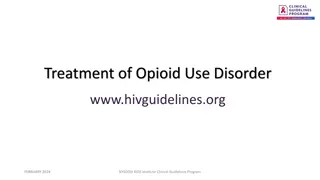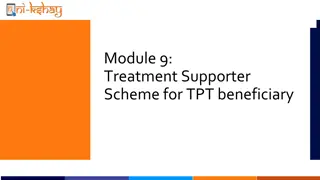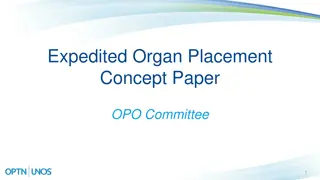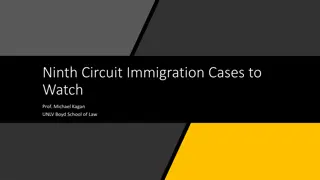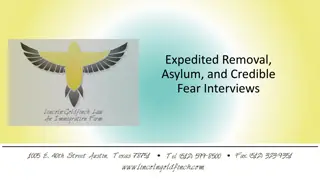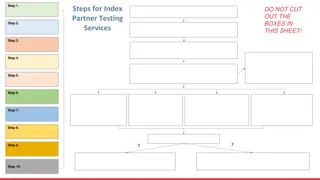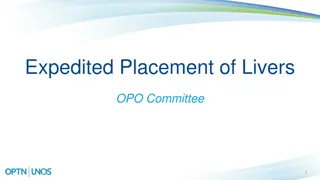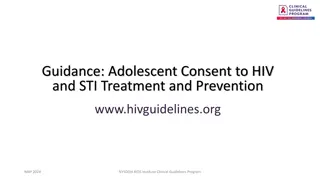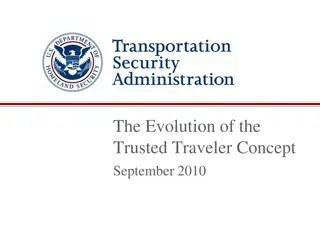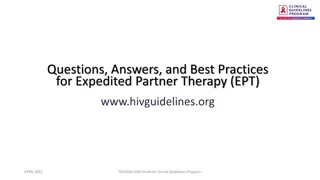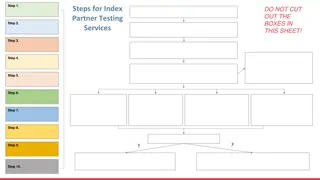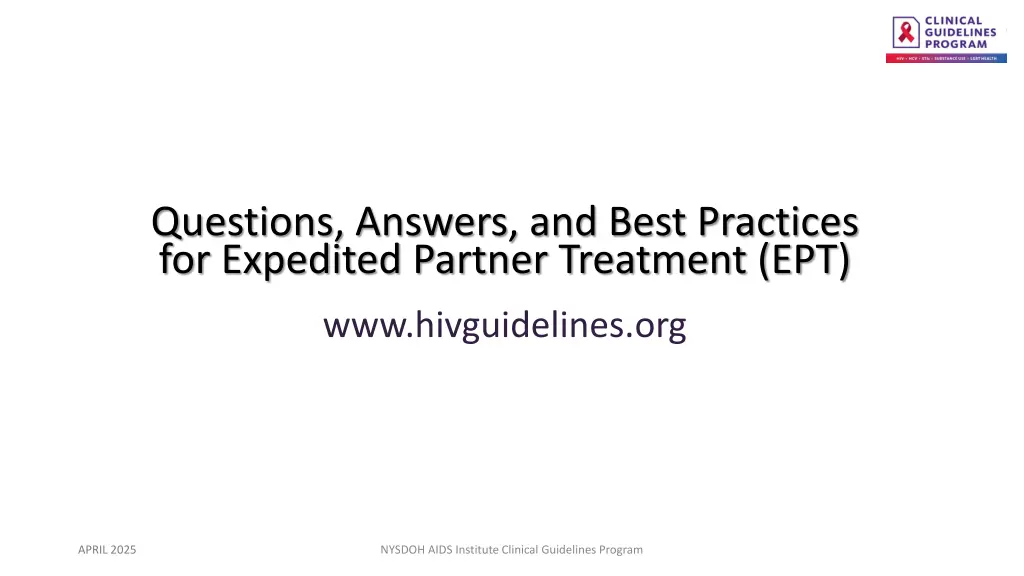
Partner Treatment Guidelines 2025
Learn about Expedited Partner Treatment (EPT) guidelines for STIs in New York, including what EPT is, why it's important, its legality, and eligibility criteria. This informative content covers key points, best practices, and state-specific regulations regarding EPT.
Download Presentation

Please find below an Image/Link to download the presentation.
The content on the website is provided AS IS for your information and personal use only. It may not be sold, licensed, or shared on other websites without obtaining consent from the author. If you encounter any issues during the download, it is possible that the publisher has removed the file from their server.
You are allowed to download the files provided on this website for personal or commercial use, subject to the condition that they are used lawfully. All files are the property of their respective owners.
The content on the website is provided AS IS for your information and personal use only. It may not be sold, licensed, or shared on other websites without obtaining consent from the author.
E N D
Presentation Transcript
Questions, Answers, and Best Practices for Expedited Partner Treatment (EPT) www.hivguidelines.org APRIL 2025 NYSDOH AIDS Institute Clinical Guidelines Program
What Is EPT? What Is EPT? EPT is the clinical practice of providing prescription medication for STI treatment without a healthcare visit for the sex partners of patients with newly diagnosed chlamydia, gonorrhea, or trichomoniasis. EPT is not allowed for treatment of bacterial vaginosis or syphilis. EPT does not replace clinic visits but is an alternative for partners unable or unwilling to see a care provider for treatment. Key Point Best practice for STI care is to see and evaluate the sex partner(s) of an index patient diagnosed with an STI. If asked, an index patient may be able to bring their sex partner(s) with them when they come for treatment. APRIL 2025 NYSDOH AIDS Institute Clinical Guidelines Program www.hivguidelines.org
Why Is EPT Important? Why Is EPT Important? STIs are a significant cause of morbidity and mortality and may result in infertility, chronic abdominal pain, and an increased risk of acquiring HIV. In 2023, NYS ranked 7th and 10th among all states for total number of cases of gonorrhea and chlamydia, respectively. EPT is an essential health service that can help combat the rising number of cases and is designed to be a low-barrier intervention. NYS encourages clinicians to take steps to make EPT as available as possible. APRIL 2025 NYSDOH AIDS Institute Clinical Guidelines Program www.hivguidelines.org
Is EPT Legal, and Who Is Eligible? Is EPT Legal, and Who Is Eligible? EPT is explicitly legal under NYS law and can be provided for treatment of chlamydia, gonorrhea, and trichomoniasis, as recommended by the CDC 2021 STI Treatment Guidelines. EPT is permissible or potentially allowable in 50 states. State laws determine the STIs covered, who can receive EPT, and how it can be provided. Review state- specific guidance before providing EPT. Sex partners of patients with a clinical or laboratory diagnosis of gonorrhea, chlamydia, and trichomoniasis are eligible for EPT, regardless of the sexual or gender identity of the index patient or their sex partner. There is no age threshold for EPT in NYS. According to NYS law, individuals aged <18 years may give effective informed consent for STI screening, treatment, and prevention services. APRIL 2025 NYSDOH AIDS Institute Clinical Guidelines Program www.hivguidelines.org
Eligibility for Expedited Partner Treatment Eligibility for Expedited Partner Treatment [a] [a] Eligible for EPT Patients with a clinical (without laboratory confirmation) or laboratory diagnosis of chlamydia, gonorrhea [b], or trichomoniasis (referred to as index patients) All sex partners exposed within 60 days before the index patient s symptom onset or diagnosis The most recent sex partner, if the index patient has had no sex partners within 60 days of the diagnosis Not eligible for EPT Patients known to have syphilis in addition to gonorrhea, chlamydia, or trichomoniasis Cases involving suspected or confirmed abuse (i.e., child abuse, sexual assault, or sexual abuse) Notes: a. Per NYS public health law, individuals aged <18 years may give effective informed consent for services related to screening, treatment, and prevention of STIs. Ceftriaxone remains the treatment of choice for gonorrhea, particularly for pharyngeal infections, for which data on treatment efficacy are limited and higher drug levels may be required. b. APRIL 2025 NYSDOH AIDS Institute Clinical Guidelines Program www.hivguidelines.org
What About Patients With Syphilis? What About Patients With Syphilis? Management of sex partners of individuals diagnosed with syphilis varies significantly depending on the stage of syphilis in the index patient. No data support use of EPT to treat partners of patients with syphilis. Partner services offered through state or local health departments can assist with sex partner treatment for syphilis throughout NYS. EPT may be prescribed for gonorrhea, chlamydia, or trichomonas while syphilis test results are pending or if patient is unable to be tested (e.g., a symptomatic telehealth visit). APRIL 2025 NYSDOH AIDS Institute Clinical Guidelines Program www.hivguidelines.org
Are Sex Partners Taking Doxy Are Sex Partners Taking Doxy- -PEP Eligible for EPT? EPT? PEP Eligible for Yes. But if the index patient s sex partner is already taking doxy-PEP, assess whether they truly need EPT. Encourage patients to determine whether their sex partner has taken doxy-PEP after all recent sexual encounters with the index patient. Because doxy-PEP is not 100% effective at preventing STIs, especially gonorrhea, patients using doxy-PEP who have sex partners diagnosed with bacterial STIs should undergo STI testing. EPT may still be used after a known exposure to gonorrhea or chlamydia despite prior doxy-PEP use; no more than 200 mg of doxycycline should be taken in 24 hours (doxycycline as EPT and doxy-PEP should not be taken together). APRIL 2025 NYSDOH AIDS Institute Clinical Guidelines Program www.hivguidelines.org
Strategies to Overcome Barriers to EPT Strategies to Overcome Barriers to EPT Integrating EPT protocols into electronic health record systems can prompt clinicians to consider EPT during patient visits, streamline the prescribing process, and facilitate documentation. Educational interventions, such as public health detailing, can improve awareness of EPT, increase EPT implementation, and reduce barriers to prescribing EPT. Providing patients with medication or prescriptions to deliver to their sex partner(s), along with educational materials, can ensure partner treatment and reduce rates of reinfection. Educating patients about the importance of partner treatment and providing them with resources to communicate with their partner(s) can enhance the effectiveness of EPT. APRIL 2025 NYSDOH AIDS Institute Clinical Guidelines Program www.hivguidelines.org
Preferred and Alternative Regimens for Preferred and Alternative Regimens for Expedited Partner Treatment Expedited Partner Treatment STI Preferred EPT Regimen Alternative EPT Regimen Comments Doxycycline and levofloxacin are contraindicated in pregnancy. Azithromycin is recommended for treatment of chlamydia in patients with unknown pregnancy status. Chlamydia Doxycycline 100 mg by mouth twice daily for 7 days OR azithromycin 1 g by mouth in a single dose Levofloxacin 500 mg by mouth daily for 7 days Gonorrhea Cefixime 800 mg by mouth in a single dose -- Treat for chlamydia if it has not been excluded. Trichomoniasis Female sex partners: Metronidazole 500 mg by mouth twice daily for 7 days OR tinidazole 2 g by mouth in a single dose Male sex partners: Metronidazole 2 g by mouth in a single dose Female sex partners: Metronidazole 2 g by mouth in a single dose Counsel symptomatic pregnant patients with trichomoniasis regarding the potential risks and benefits of treatment. Note:The index patient s and sex partner s EPT regimens may differ based on individual patient factors. APRIL 2025 NYSDOH AIDS Institute Clinical Guidelines Program www.hivguidelines.org
Prescribing EPT Prescribing EPT EPT medications may be dispensed in person at the point of care or prescribed. Partner packs (dispensed in person) are preferred and include medication for the index patient and the sex partner along with informational materials and clinic contact options. When partner packs are not available, provide a prescription to the index patient for their sex partner, along with informational materials and clinic contact information. Prescriptions must have EPT in the comments below the care provider information Prescriptions may be electronic or on an official NYS prescription form. NYS Law: Medications must be labeled with the name and address of the dispenser, directions for use, date of delivery, proprietary or brand name of the drug, and strength of the contents. APRIL 2025 NYSDOH AIDS Institute Clinical Guidelines Program www.hivguidelines.org
Prescribing EPT in New York State Prescribing EPT in New York State If the sex partner s name, address, and DOB are available, enter them in the designated prescription fields. If the sex partner s name, address, and DOB are not available, enter the following: First name: Expedited Last name: Partner Gender: Use available values Date of Birth: Use 1/1/1901 if unknown Street: Pharmacy Should Request Address City, State, and Zip Code: Default to the city, state, and zip code of prescriber or pharmacy APRIL 2025 NYSDOH AIDS Institute Clinical Guidelines Program www.hivguidelines.org
Prescribing EPT in New York State, Prescribing EPT in New York State, continued continued Some sites use a dummy patient profile (e.g., Partner, Expedited ) under which EPT prescriptions can be entered and transmitted electronically to a pharmacy. The sex partner s name and contact information are placed in the section for comments to the pharmacist (e.g., This is an EPT Rx for recipient XYZ. ). Some sites issue additional prescriptions within the index patient s electronic health record and include comments to the pharmacist that 1) the prescription is for EPT and should be issued for the sex partner of the index patient and 2) the index patient should not be billed (e.g., For EPT; do not bill this patient. ). If electronic EPT prescribing is not available, issue a paper prescription. EPT is an exemption to mandated electronic prescribing. APRIL 2025 NYSDOH AIDS Institute Clinical Guidelines Program www.hivguidelines.org
Payment and Follow Payment and Follow- -Up for EPT Up for EPT Medication costs are the responsibility of the sex partner and may be paid for in cash or through health insurance coverage. The index patient s insurance cannot be billed for medications for a sex partner. If the sex partner is uninsured, provide the EPT medications in person when available. Contact the index patient and, with consent, their sex partner by phone to ensure they have or will pick up the medications and that symptoms resolve. Schedule follow-up visits for index patients if symptoms persist or at 3 months for repeat testing because of the risk of reinfection. Advise that sex partners follow up for comprehensive sexual health services as soon as possible. APRIL 2025 NYSDOH AIDS Institute Clinical Guidelines Program www.hivguidelines.org
Educating Patients About EPT Educating Patients About EPT Advise index patients to inform their sex partner(s) that they may have been exposed to an STI and should seek evaluation and treatment even if they do not have symptoms. Sex partners should read the information provided before they take the EPT medication. Sex partners should seek medical care before starting the EPT medication if they: Are allergic to antibiotics Have abdominal pain, pelvic pain, testicular pain, fever, nausea, vomiting, or other symptoms of serious illness that require evaluation and may require treatment beyond EPT Are pregnant or could be pregnant Have serious health problems Are taking prescription or nonprescription drugs, because potentially dangerous drug-drug interactions could occur APRIL 2025 NYSDOH AIDS Institute Clinical Guidelines Program www.hivguidelines.org
Educating Patients About EPT, Educating Patients About EPT, continued continued Educate index patients and sex partners about: Possible additional treatment if an STI that is not covered by the delivered EPT Abstaining from sexual activity without the use of barrier protection for 7 days after treatment decreases the likelihood of reinfection STI prevention, including the use of barrier protection and HIV PrEP The preferred approach to STI care for sex partners, including those who took doxy- PEP after every sexual encounter, which is to see a clinician for a complete STI evaluation, including HIV testing, even if they take the EPT medications Resources: NYS offers free educational materials for distribution to partners at https://www.health.ny.gov/diseases/communicable/std/ept/index.htm APRIL 2025 NYSDOH AIDS Institute Clinical Guidelines Program www.hivguidelines.org
Need Help? Need Help? NYSDOH AIDS Institute Clinical Guidelines Program www.hivguidelines.org
Access the Guidance Access the Guidance www.hivguidelines.org > Questions, Answers, and Best Practices for Expedited Partner Treatment (EPT) Also available: Printable PDF NYSDOH AIDS Institute Clinical Guidelines Program www.hivguidelines.org


